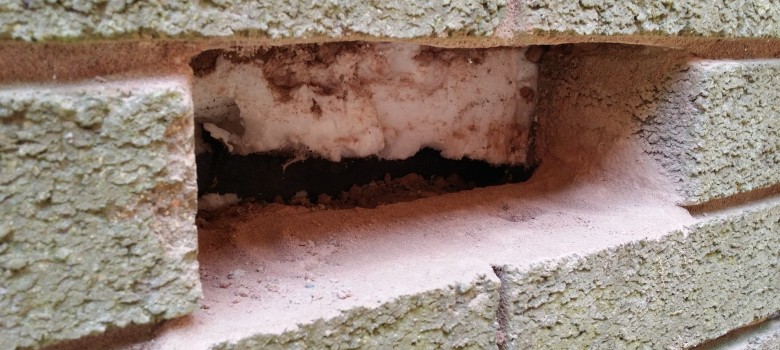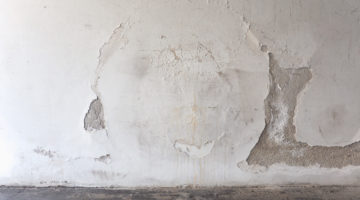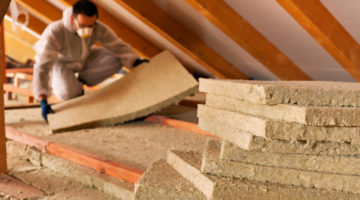
Cavity wall insulation can be done incorrectly
When installed correctly, cavity wall insulation is a fantastic way to help lower your energy bills. The insulation will slow the movement of heat across the wall and therefore your home will stay warm longer once you put your heating on, meaning you need to use less energy to keep your home at a comfortable temperature. It is for this reason the Government have traditionally been keen to promote the measure – after loft insulation, cavity wall insulation is the second most cost-effective energy saving solution.
In some cases though, cavity wall insulation simply isn’t the answer – the good news is that it can be rectified, the bad news is that there is a cost.
Why would you remove cavity wall insulation?
In the 1980s, building regulations stipulated that insulation should be installed during the construction of new buildings. As soon as these regulations came into play, it became clear there were a huge number of slightly older properties that could also benefit from this type of insulation; however the only way to get the insulation into the cavity once the property was built was to inject it. Since the materials were cheap and the installation process was relatively simple, the Government really pushed the measure. Thousands of small installer companies popped up, knowing they could install the insulation in people’s homes and be well paid for the work.
As a result, any property with an unfilled cavity was targeted, regardless whether it was suitable or not – so obviously issues occurred. Some of these issues are laid out below:
- The insulation material used was unsuitable – e.g. urea-formaldehyde. The problems with this insulating product were two-fold: Firstly, it breaks down, releasing (carcinogenic) formaldehyde into the home. Secondly, when the insulation breaks down it falls down the cavity, meaning walls higher up no longer benefit from the insulation.
- When cavity walls were first introduced in the 1930s, the cavity’s sole purpose was to prevent water crossing the wall from outside to inside, causing damp in the home. As a result the early cavities were very thin – insulation could cause bridges between the two skins of brick, allowing water to cross and leading to damp issues in the home.
- The insulation was installed incorrectly. When the cavity wall installer puts the cavity wall insulation in the gap between the two skins of brick, the wall needs to be drilled in various places to allow an even distribution of the insulation. If the distances between the drilled holes were incorrect, then the insulation would not meet leading to cold spots.
- Another issue was corner-cutting. Since installers are paid per m2 of wall, they need to do the jobs as quick as possible. When beads are injected into the cavity wall they are injected with a uPVC glue which binds all the beads together. The problem is that doing this properly – injecting the glue with the beads – takes about 3 times longer than installing the beads alone. Some installers wouldn’t bother, as they were looking to maximise profits by doing multiple jobs in the same day. This often led to beads ‘settling’ in the bottom of the cavity, meaning there was no real insulating impact on the upper parts of the wall.
- Until the development of new technology, cavity wall insulation wasn’t suitable for every property. If a wall is privy to driving rain for instance, the cavity is required to prevent ingress of water into the home. If these walls were retrofitted with old-fashioned types of cavity wall insulation, it could quickly lead to damp issues – this is most prevalent in coastal regions.
- Another example of a wall being unsuitable is when we hear of timber frame properties having had cavity wall insulation installed. These properties should never have cavity wall insulation installed. However an untrained or untrustworthy installer may have installed anyway to make sure they get paid for the job. We get several phone calls a month from homes who are in this situation and are trying to sell their properties, but are finding it impossible since mortgage companies won’t allow prospective buyers to get a mortgage on the property until the cavity wall insulation is removed.
- The final reason is when someone has just bought a property previously installed with cavity wall insulation. In some cases, the insulation causes allergies for the new homeowner and again this needs to be removed despite the energy savings resulting from the installed cavity wall insulation.
How to get rid of unwanted cavity wall insulation
If you can relate to any of the above, then it is relatively easy to get the offending cavity wall insulation removed – bricks at the bottom of the wall are removed and the insulation is simply sucked out, leaving the cavity completely clear.
The cost of getting cavity wall insulation removed is £21 – £22 / m2 depending on the material that was used in the first place, therefore for a semi-detached (which is 80m2) the price will be approximately £1,680 + VAT @ 20%. For a bigger detached property (so roughly 120m2) the price to remove the cavity wall insulation would be a £2,520 + VAT @ 20%.












Please contact me via email as I’m dealing with it for my parents
Cavity insulation removal
I need to remove cavaty insulation
I would only consider going ahead if it qualifies for a government grant, and I would need a fixed price as we are on a pension.
We had our insulation put in when the government offered it for £99 but its blocked all the air holes with like cotton wadding there fore we now have mould and can afford to have it removed
I need my cavity wall insulation removed. Is there a grant for this as sadly I don’t have money to have this done
My council installed cavity wall insulation for free. 9 years later I have discovered damp mouldy patches and walls crumbling. My council will not remove it for free and I am unable to pay for this.. wouldn’t advise getting it, I am so distressed
Can someone contact me regarding formaldehyde cavity wall insulation removal please?
Hi, I’m trying to find out if there is a grant to have cavity wall insulation removed as its caused a damp problem
Good afternoon,
I am the Property Services Manager for Thorngate Churcher Trust. We are an Almshouse charity housing provider for the over 50’s. We have 224 one bedroom flats spread over 3 sites. We also have a 44 bedroom dementia care home.
I would like to invite you to quote for a survey of all our properties and to advise on whether or not we 1. Require cavity wall insulation and 2. Whether extraction and replacement is required. All bar 1 of our flats are EPC C rated with one flat D rated. This is the block I would like to concentrate on first with the proviso that the rest will follow as part of a planned project.
Can you please let me know if you are interested in visiting us with a view to quoting for this work ?
Kind regards,
Ken